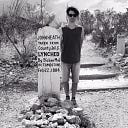Member-only story
America is the Land of Violence & Vice — and That’s OK
A Trip Through American Rascality: Gambling, Booze, & Crime from Vicksburg to Vegas

“They delight in their present low, lazy, sluttish, heathenish, hellish life, and seem not desirous of changing it.”
— Rev. Charles Woodmason, 1766
“Violence is as American as cherry pie.”
— H. Rap Brown
America has got to start being honest with itself.
I’ll be honest.
I really didn’t see what all the hand-wringing was about over the recent police brutality protests-turned-riots. Self-important pundits right and left clutching pearls over the notion that anyone would burn their own city to the ground in the face of invincible corruption. I was just surprised that’s as far as it went.
But then again, I consider myself exceptionally American. That is, a degenerate — unfazed by violence and weak for vice.
It took torching a city, and consequently many more across America, to simply begin the process of any kind of justice for George Floyd. The cop responsible was charged with second-degree murder. Would this have happened solely with peaceful protests? Hard to say. We saw the frothing-at-the-mouth response to…
